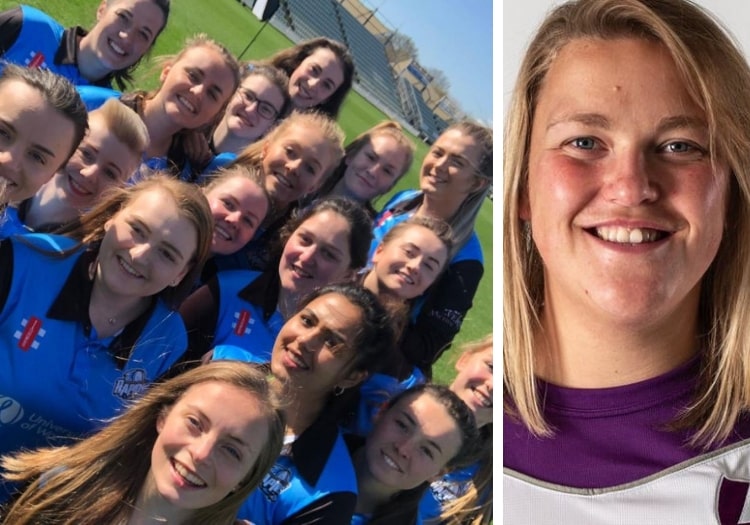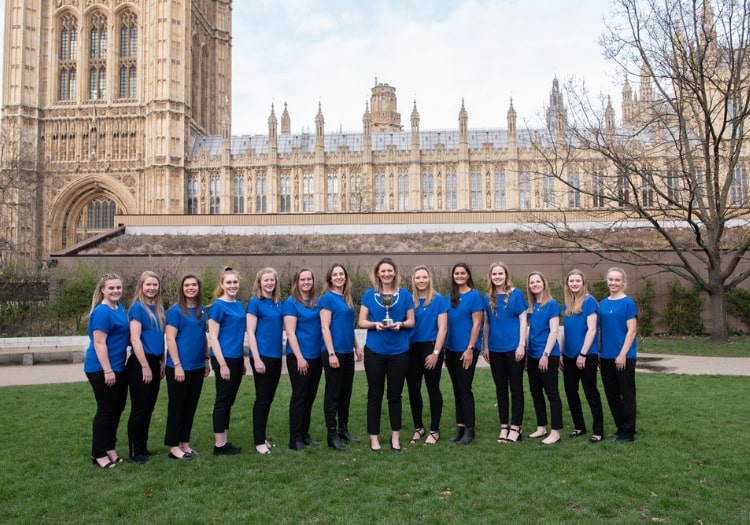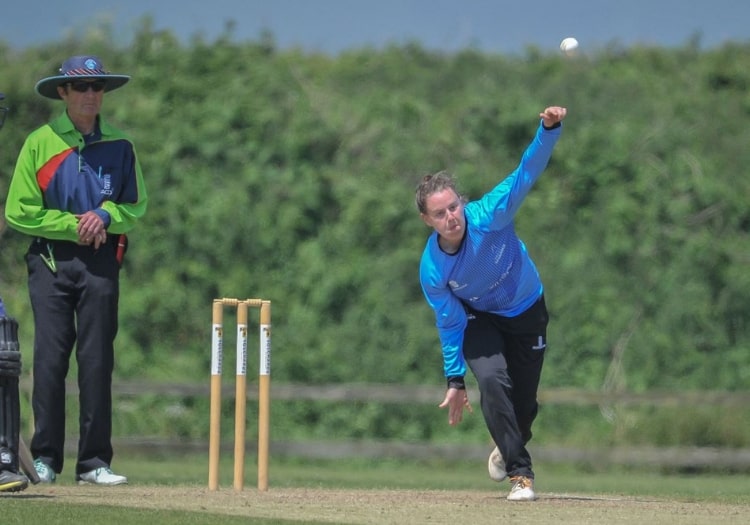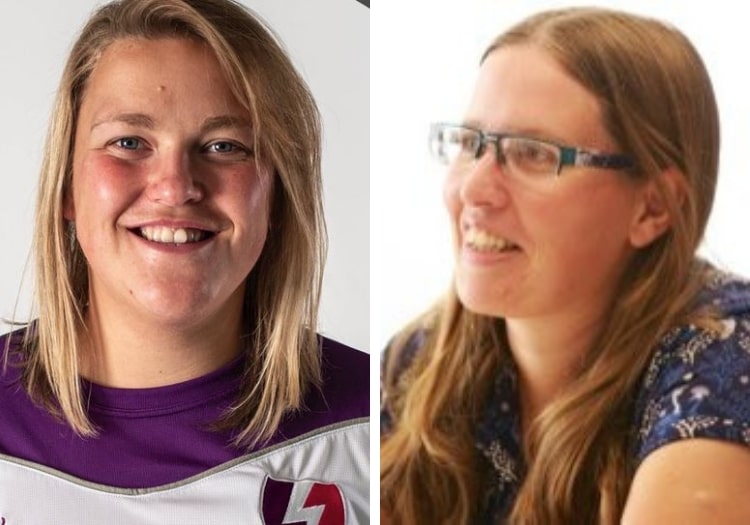SAM MORSHEAD: Regardless of the sensitivities around how and why Worcestershire chose to cut their ties with their former captain, the incident brought to public light the very real challenges facing the women’s county game

Lauren Rowles had played for Worcestershire for seven years and captained the club’s senior women’s side for three when she was unceremoniously cut from the squad earlier this month.
Rowles had been dropped, in part, for the alleged late payment of a fee charged by the county for facilities hire and kit provision for their women’s first XI.
When the 26-year-old announced the news on Twitter, there was genuine surprise - partly about the reason for her exclusion but, more significantly, because of the story she was telling about women’s county cricket in 2019.
On the day that a passionate group of bloggers formally launches a grassroots project designed to raise the profile of the Women’s County Championship, The Cricketer delves more into the matter and the wider tale it has to tell about the female domestic game in England and Wales.
“The reaction to the Lauren story was really telling,” says Raf Nicholson, co-founder of CricketHer and a prominent figure within women’s cricket media.

Hampshire, the current Women's County Championship champions
“Lots of people were really flabbergasted. ‘What on earth is she doing having to pay a match fee to play!’ They don’t understand that is completely the norm in women’s cricket and they don’t really think about it.”
Rowles had been accused of defaulting on a combination of payments relating to the 2018 and 2019 seasons which added up to more than £200 - a debt which, according to emails seen by The Cricketer, had been due to be resolved by the end of February.
There is some evidence that Rowles attempted to pay the outstanding sum in full on February 28 only for the online transfer to bounce back with an error message that suggested the account in question had been closed.
Worcestershire Cricket Board cricket development director Tom Hill told The Cricketer via email that “finance was not the only issue at play” in the decision to drop Rowles and that “with increased investment comes increased responsibility of the squad to act as role models hence the need to invest in the correct players who share our values”.
On the wider point of investment in women’s cricket, Worcestershire told The Cricketer that 91 per cent of the women’s programme in the county is subsidised from sources outside of the players themselves - counties are allocated a small sum from the ECB for this reason each year, while clubs may use their own funds to top this up or seek external sponsors to do the same - and they say that the money put into the initiative has nearly doubled over the past four years.
"The main issue here is that we shouldn’t have to be out of pocket to play for our county. It didn’t sit well with me"
Regardless of the sensitivities around how and why Worcestershire chose to cut their ties with their former captain, however, the incident brought to public light the very real challenges facing the women’s county game.
“The main issue here is that we shouldn’t have to be out of pocket to play for our county. It didn’t sit well with me,” Rowles told The Cricketer.
“I know a lot of female cricketers and they said to me this week ‘I can’t believe that you still have to pay’. It’s not a small fee. And on top of that we have to buy our own kit, we travel quite far for training and things like this shouldn’t be happening. I shouldn’t have had to have paid money in the first place to represent my county.
“If people take the women’s game seriously, they can find the money from somewhere. They can not give the men two lots of clothing, which will probably save them £70. That would probably pay for the programme.
“If they take it seriously then sponsors will be more inclined to get involved because it’s seen as a more serious thing to get involved in, rather than something they do to tick a box to make it look like they provide women’s cricket or support women’s cricket.
“I understand that they’re not a charity, they’re more of a business, but if you take it seriously and invest a bit of money it wouldn’t take much to make it free for the women’s team.”
Nicholson sings a very similar tune.
Well it’s been an interesting week. Any counties looking for players this season? 😬 pic.twitter.com/5xbtExBS5P
— Lauren Rowles (@LaurenRowles10) March 10, 2019
Counties which have not yet been able to secure wealthy benefactors will inevitably find it difficult to fully subsidise programmes based solely on the money generated by women’s cricket in its current state and the modest funds provided by the ECB, who will top up the coffers for every England player produced by a certain team.
England players with central contracts can earn up to £50,000, according to figures published by the Sunday Times, but the county game is wholly amateur.
Sussex have been supported by Sir Rod Aldridge, the former head of outsourcing giant Capita with a personal wealth estimated to be in excess of £130million. The training facility which bears his name, and at which the county play their Championship fixtures, was built at a cost of £1.8m - a number totally at odds with the balance sheets of women’s county cricket clubs elsewhere.
During the time that Isa Guha, the former England international turned respected commentator, was playing for Berkshire, the county was sponsored by her father Barun, whose company supplied refrigerators to supermarkets.
No doubt there are other tales littered around the English domestic pyramid of clubs doing what they can to survive, leaning on the generosity of close associates and loved ones where possible.
That, Nicholson says, has to change. Especially if England are going to continue producing high-quality international players to compete with Australia, whose proactive approach to the women's game in recent years has seen them become the preeminent global force.
“Ultimately (the County Championship) is the feeder into the England setup and, up until the KSL, it was the only cricket the England girls were playing other than the international stuff,” says Nicholson.
“It has equally as important a purpose in women’s cricket as it does in men’s cricket.
“It’s very much being run on a shoestring and by volunteers. No one coaches a women’s county team as a full-time job.
“The team managers are all volunteers, paid expenses but not for what else they do.
“The ECB are heavily dependant on the goodwill of volunteers at county level.”

Sussex spinner Linsey Smith in action
Australia’s domestic 50-over competition - the Women’s National Cricket League - features seven state sides playing each other once in a round-robin league prior to a winner-takes-all final contested by the top two. In February, New South Wales breakers beat Queensland Fire by 31 runs to take the title.
The small number of teams involved in the competition is a factor Nicholson highlights when identifying the difficulties the ECB will have when they attempt to advance the women’s structure in England and Wales from 2020.
Ten counties will turn semi-professional - at the moment 35, including Scotland, Wales and the Netherlands, feature across three divisions in the County Championship - but there is no guarantee that funding will be in place to allow women’s county cricket to continue and progress at a level below.
“If you’re a girl and you work your way through county age-group cricket you’ll get to 18 and if you’re good enough you can go and play for a completely different county that might be miles away, and if you’re not good enough you can just play club cricket,” says Nicholson.
“People feel quite upset about that and that it will end up with people leaving the game.”
CricketHer have run several stories about the impending change of structure but precious little can be found on most of the mainstream media outlets which regularly push cricket content, The Cricketer included. The Times is the prominent exception.
This is another issue by which all close to the women’s county game are routinely frustrated.
“There’s so much social media about what the men are doing and All Stars and Chance To Shine… this should be up there with those things,” says Rowles.
“There are hundreds and thousands of girls and women who play and want to know about women’s cricket, and you’ll never find them if you don’t put some media out about it consistently.”
"With women’s sport especially, you really do have to spend a bit of money up front to get it out there, get it known and increase the standard"
With women’s senior sides largely outsourced to county boards, the self-promotional work of female first XIs done by the counties themselves is sporadic and limited.
The Cricketer checked the Twitter feeds of every first-class men’s county for posts relating to their respective women’s setups in the 10-day period between May 10 and May 20 last year, during which time every women’s county played at least once.
Between the 18 accounts, there were 14 tweets that fitted the criteria. Twelve of the handles did not post once in relation to their women’s setup. Warwickshire led the way with five.
During that time there were, however, tweets afforded to the opening of a brewery, a sponsorship deal with an energy supplier, an A-ha concert, the unveiling of a plaque, the FA Cup final, the Royal Wedding and a memorabilia fair.
At Worcestershire, according to Rowles, the majority of the social media promotion revolving around the women’s side is generated by the players themselves.
To apply an element of introspection, The Cricketer has run just two stories relating to the Women’s County Championship online in the past year - both have come in the past month, since notice of the Women’s County Cricket Day was given by its organisers.
Nicholson, meanwhile, aired her grievances about the ECB’s contribution to the coverage deficit.
“It wouldn’t really need much to get to a point where the ECB are covering it properly, or at least better than they are at the moment,” she says, advocating for the introduction of a system similar to that of the Reporters Network which covers men’s county cricket at the expense of the ECB, and provides match reports and features to local and national media.
We asked Raf Nicholson what reasonable steps could be taken to ensure the better promotion and consequent development of women’s county cricket over a three-year period...1 - Keep county cricket going below the initial new 10-team professionalised league2 - Pay the players enough so they can break even, and don’t have to pay for kit. It will only focus their minds more3 - Investment in reporting. Pay people to attend matches and circulate basic reports among ECB platforms and the local and national media4 - Engage the general public. Get cricket fans to find days in the calendar where a match is going on near them5 - Over the coming two to three years, encourage regular attendance at game, starting with the 10 newly semi-pro counties6 - Look to full-time professionalism at the top. If that doesn’t happen in the next five or six years, the further behind Australia we will find ourselves
Nicholson says CricketHer offered to produce Women’s County Championship reports for the ECB last year, but saw their proposal declined.
“Every year, we announce the winners of the Women’s County Championship and if we don’t do that, nobody would know,” she says.
“We have players messaging us asking if they were being demoted.”
Plenty to think about, then, for organisers, administrators and those trusted with the nationwide promotion of the game.
“If more counties - whether they like it, whether they don’t like it, whether they think it’s a waste of time - can just invest and say ‘you know what, we believe in you and believe you can go on to be good cricketers’ and show that by making sure we’re not out of pocket,” says Rowles, who is now looking for a new side.
“I spend more money representing my county than I do playing club cricket and I think that is just bizarre.
“There can be a shift as long as there are the right people in the right positions. At the moment, I don’t think that’s consistent enough.”
“If you look at Australia, a lot of the initial investment was not made with the aim of getting a short-term profit. I think it was a bit of a gamble,” says Nicholson.
“They said ‘we are going to spend a lot of money and we’re going to get it right, and we think if five or 10 years it’s going to pay off.
“With women’s sport especially, you really do have to spend a bit of money up front to get it out there, get it known and increase the standard.”
Outside of cricket, that process has been taking place in recent years, most notably in football. So much has the notoriety of the country’s female footballers grown in the past decade, the domestic top division - the Super League - recently secured a £10m, three-year sponsorship deal with Barclays, an agreement which would have been inconceivable a decade ago.
The Telegraph, meanwhile, last week announced a new editorial team, charged with giving female competition more prominence across all sports.

Lauren Rowles, left, and Raf Nicholson
There is movement, but Nicholson is concerned that without an internal spark, women’s county cricket won’t keep up with others.
“The standard of women’s county cricket compared to men’s county cricket just isn’t comparable because these are players who are either studying or doing other full-time jobs,” she says.
“We’re in a similar position where we were with England cricket 15 years ago, in that it wasn’t professional at all, people didn’t really know about it and you get to 2017 and they can sell out Lord’s for a World Cup final.
“When they first introduced England contracts I’m sure it wasn’t because they thought they would get a return on their investment in 12 months’ time. They did it because it was the right thing to do and because you won’t ever be able to develop properly until you are able to do something full-time.
“You won’t ever generate that attention and excitement around something unless you invest initially.”
That is where the Women’s County Cricket Day comes in. Nicholson and a cluster of other independent bloggers have launched the initiative in an effort to encourage cricket lovers to give the women’s domestic game a go this summer.
The event is scheduled to take place on Bank Holiday Monday, May 6, at a time when very little men’s cricket can be found on the fixture list.
Nicholson says that if “everyone who followed county cricket came to one women’s county match this season, that would make an enormous difference”.
It might just be the kick the game needs.
More details about the Women’s County Cricket Day can be found by clicking here.